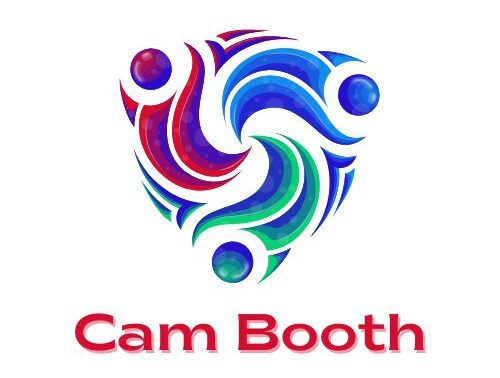When it comes to your child’s health, early development is critical. One area that parents might not think about often—but is incredibly important—is cranial technologies, . This innovative field focuses on diagnosing and treating cranial deformities, such as plagiocephaly, which can impact an infant’s overall well-being if left untreated.
This post explores cranial technologies, their applications, benefits for children, and what parents should know to make informed decisions. Whether you’re just hearing about cranial technology or seeking better solutions for your child, this guide will walk you through it all.
What Are Cranial Technologies?
Cranial technologies refer to advanced medical methods and tools design to address cranial deformities, particularly in infants. Most commonly, these technologies involve the assessment, diagnosis, and treatment of flattening or asymmetry of the skull caused by conditions like plagiocephaly (sometimes called “flat head syndrome”) or brachycephaly.
Plagiocephaly has become more common since the adoption of “back to sleep” campaigns to prevent sudden infant death syndrome (SIDS), encouraging parents to position infants on their backs for sleep. While life-saving in preventing SIDS, this approach increases the chance of pressure on one part of the skull, leading to flattening. That’s where cranial technology comes in.
One of the most well-known companies in this space is Cranial Technologies Inc., which specializes in treating plagiocephaly through non-invasive, effective solutions like custom-designed helmets.
Why Would a Child Need Cranial Technologies?
The skull of a newborn is soft and flexible, making it vulnerable to deformation if external pressure is applied repeatedly in a single area. While sometimes the condition corrects itself as the baby grows, many cases require intervention to ensure proper skull symmetry.
Here are some scenarios where cranial technologies become important:
- Positional Plagiocephaly: Caused by a baby lying with their head in the same position frequently.
- Torticollis: A condition where neck muscles cause the baby’s head to tilt in one direction, increasing pressure on one part of the skull.
- Prematurity: Premature infants tend to have softer skulls, making them more susceptible to deformities.
- Congenital Factors: Conditions present from birth can also lead to uneven skull formation.
These conditions aren’t just about aesthetics. Cranial asymmetry, if left untreated, can lead to:
- Difficulty fitting helmets or hats later in life
- Misalignment of the jaw or dental issues
- Vision or ear alignment problems
With the right intervention using cranial technologies, parents can address these issues early and improve their child’s overall development.
How Cranial Technologies Work
Step 1 – Diagnosis
The first step to utilizing cranial technologies is getting a professional assessment. Pediatricians or specialists might notice asymmetrical features in your baby’s head, prompting further evaluation. Technologies like 3D cranial scans can accurately map the shape of the baby’s skull, giving healthcare providers a clearer picture for diagnosis.
Step 2 – Treatment Plan
Based on the diagnosis, the next step is creating a personalized treatment plan. The most common treatment for cranial deformities is cranial orthotic therapy. This involves designing custom helmets (called cranial remolding orthoses) that gently guide the baby’s skull into a more symmetrical shape as they grow.
Step 3 – Helmet Therapy
The custom-fit helmet doesn’t cause pain or discomfort to the baby. Made from lightweight, breathable materials, they allow room for growth in the flattened areas and direct growth into a more balanced shape. Therapy typically lasts 3 to 6 months, depending on the severity of the condition and the baby’s age when treatment begins.
Step 4 – Regular Monitoring
Regular consultations ensure that the treatment remains effective. Adjustments are made to the helmet as the baby’s head grows, ensuring optimal results.
The Benefits of Cranial Technologies
Cranial technologies may seem like a niche aspect of pediatric care, but the impact they have on a baby’s development is significant. Key benefits include:
- Improved symmetry over time: Encourages a balanced shape for helmets, hats, and overall aesthetics.
- Non-invasive and safe: Unlike surgery, these technologies offer a gentle way to correct skull deformities.
- Boosts confidence in parents: Witnessing positive outcomes helps parents feel reassured about their child’s development.
- Enhances vision and hearing alignment: Proper skull symmetry supports equal placement of the ears and eyes.
Is Helmet Therapy a Common Choice?
While the idea of placing a baby in a cranial helmet may seem unique, it’s actually a very common and effective treatment path. Parents should consider this option if natural remedies (changing baby’s head position, tummy time, etc.) don’t yield results by the time the child is 6 months old.
What Parents Should Keep in Mind:
- The earlier, the better. Starting treatment between 4–6 months of age tends to yield quicker and more effective results.
- It doesn’t hurt! Babies usually adapt to wearing cranial helmets faster than expected.
- Monitor results carefully. Regular follow-ups help ensure progress.
Tips for Parents Navigating Cranial Technologies
If your child has been diagnosed with a cranial deformity, here are some helpful next steps:
- Educate Yourself: Research conditions like plagiocephaly and the available treatment options to better understand what your child needs.
- Consult a Specialist: Reach out to an expert for comprehensive guidance. Cranial Technologies® has clinics that specialize in treating plagiocephaly across the United States.
- Focus on Tummy Time: Increase your baby’s time spent on their stomach while awake to reduce the chances of flattening further.
- Follow Your Gut: If you feel your concerns about your child’s development are being dismissed, seek a second opinion.
What Sets Cranial Technologies Apart?
Cranial Technologies Inc., a leader in this space, developed the innovative DOC Band®, a type of cranial remolding orthosis that has successfully treated over 200,000 babies. Each band is custom-designed using 3D imaging and expert craftsmanship. Their treatment plans emphasize comfort and precision, helping families achieve results that set their children up for healthy development.
How to Get Started
If you think cranial technologies could benefit your child, don’t wait. Early intervention is key to successful treatment, and the longer you delay, the more challenging it becomes to achieve optimal results. Consult with a pediatrician or visit a specialized cranial clinic for a thorough assessment.
Start by reaching out to Cranial Technologies to learn about their specialist treatments, or explore other providers offering cranial orthotics.
FAQs
What is the DOC Band®?
The DOC Band® is a custom-designed cranial remolding orthosis developed by Cranial Technologies to treat flat head syndrome (plagiocephaly) and related conditions. It is lightweight, comfortable, and created using advanced 3D imaging to ensure a precise fit for each baby.
How does the treatment process work?
The treatment begins with an initial consultation and a detailed assessment of your child’s condition using 3D imaging technology. Once your child is fitted with a customized DOC Band®, regular follow-up appointments will monitor their progress and make necessary adjustments to ensure effective results.
At what age is treatment most effective?
Treatment is most effective when started between 3 and 6 months of age, as a baby’s skull is still growing and more malleable during this period. However, consultations are still encouraged for older babies to determine if treatment might be beneficial.
Is the DOC Band® comfortable for my baby?
Yes, the DOC Band® is designed with your baby’s comfort in mind. It is lightweight and has a snug, secure fit to avoid causing irritation or discomfort during wear.
Will my insurance cover the cost of treatment?
Coverage for the DOC Band® varies by insurance provider and policy. Cranial Technologies provides guidance to help families understand their insurance benefits and works with them to explore payment options.











